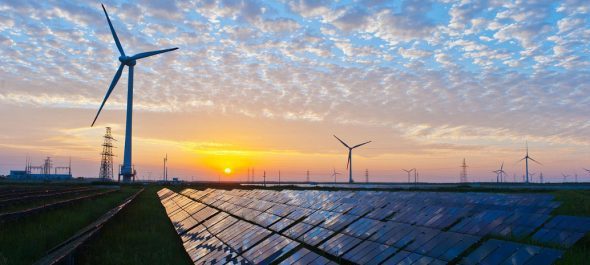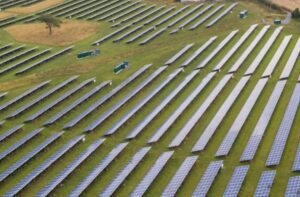Gold and nickel miner Province Resources has unveiled plans to build 1 gigawatt of wind and solar capacity in Western Australia, from which it plans to manufacturer green hydrogen.
The planned site for the wind and solar farms is in the Gascoyne region of Western Australia, just south of Carnarvon. The miner says the region is ideal for both wind and solar generation, as it is the fourth windiest place in Australia and has 211 sunny days per year.
It hopes the project, which it is calling HyEnergy, will make 60,000 tonnes of green hydrogen per annum, or up to 300,000 tonnes of green ammonia.
The project is currently no more than the seed of an idea, with any actual construction work a long way off. The first step will be to acquire Ozexco, which holds exploration licences for the region.
Province, which is listed on the ASX, has come to a conditional agreement to buy Ozexco, but the transaction relies on a $1.35 million capital raising.
That’s unlikely to be an issue, though, as following the announcement Province’s share price has more than doubled. The licences will also be used to explore the potential for salt and potash mining.
If the deal goes ahead, Province will have to consult a long list of stakeholders, including coming to a heritage agreement with the Yinggarda Aboriginal Corporation, before it can assemble a team and begin a feasibility study of the project. It will then contract a third party to build the wind and solar. It expects that process to take 12 to 18 months.
To become a reality, the project will require a much bigger investment than the relatively minuscule $1.35 million it is currently asking for. Given the exploration licences will also be used to explore the potential for salt and potash mining, the green hydrogen proposal is not essential to make the purchase of Ozexco worthwhile. While green hydrogen taps into the zeitgeist, the fact is the economics of green hydrogen are a very long way from making production of the zero-carbon fuel economic.
Still, Province points out both the Western Australian and federal governments are supporting the development of a green hydrogen industry. Ultimately, Province hopes Carnarvon will become a “hydrogen hub” with the right infrastructure, including a hydrogen port and pipeline, to make producing green hydrogen at scale an economically viable prospect. This is an idea promoted by the COAG Energy Council in its National Hydrogen Strategy, published in November 2019.
One of the most ambitious projects in Western Australia is the Asian Renewable Energy Hub, which plans to invest more than $50 billion to create 26GW of renewable energy, much of which would be used to manufacture green hydrogen for export to Asia. Last October, the federal government granted the plan “major project status”.
British oil supermajor BP last May announced it was conducting a feasibility study to build an export-scale renewable hydrogen production facility in Western Australia. That would require 1.5GW of renewable capacity. The Australian Renewable Energy Agency (ARENA) contributed $1.7 million to the project, on top of BP’s $2.7 million.
Hydrogen Renewables Australia, with the backing of German renewables giant Siemens, is planning 5GW of renewable capacity for the proposed Murchison Renewable Hydrogen Project near Kalbarri, 400 kilometres south of Carnarvon.
Iron ore giant Fortescue Metals also has big ambitions to turn Western Australia into a green hydrogen centre, with plans to build a massive 40 GW of renewable capacity in the Pilbara, with which it says it will manufacture green hydrogen. Globally it has ambitions to build an astonishing 1,000GW of renewable capacity. This week the company announced a policy of investing 10 per cent of all its profits for this purpose, which this year alone could approach $1 billion.
While Fortescue has talked up the use of green hydrogen in steelmaking – potentially pitting it against Australia’s metallurgical coal industry – Province talked more about the transport uses of hydrogen, particularly in trucking and shipping.
According to Bloomberg New Energy Finance, for green hydrogen to be viable as a shipping fuel, it would require a carbon price of $US145 a tonne – a figure that aptly demonstrates the challenges facing aspiring hydrogen manufacturers. For steelmaking, the carbon price would have to be $US50 a tonne.








